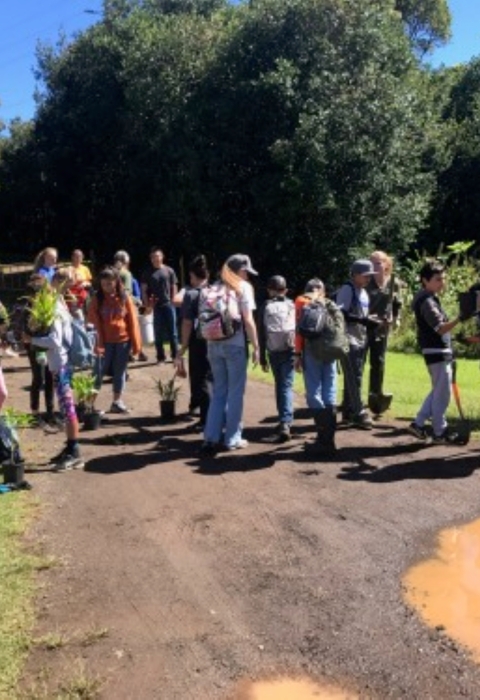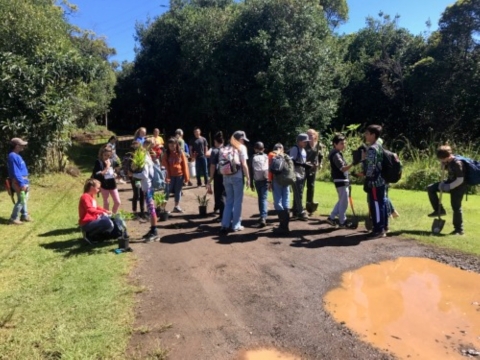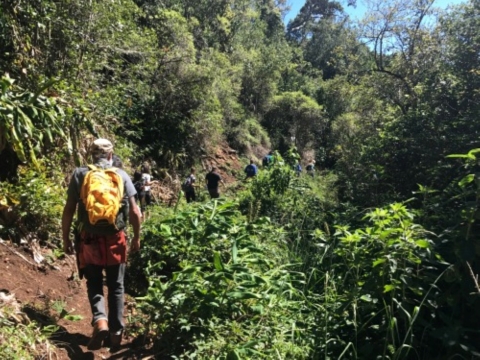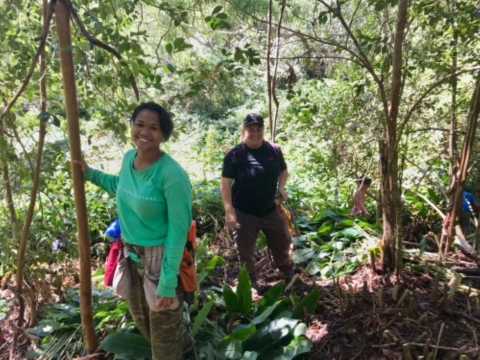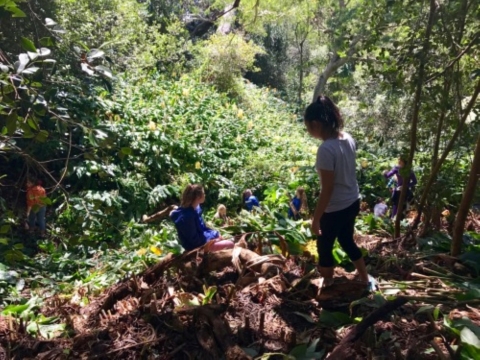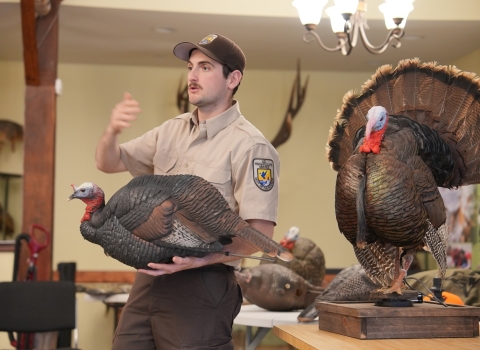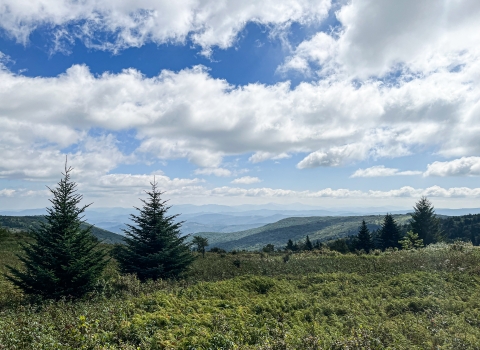This year is the 50th anniversary of the Endangered Species Act, a law that has been a powerful catalyst for conservation of America’s most treasured fish, wildlife, plants and their habitats. In the Pacific Region, our Tribes, state and federal agencies, and partners have joined with our dedicated staff to be the driving force behind the successes we share and the strength ensuring we can address the challenges ahead. Celebrate this milestone with us in this collection of stories as we reflect on past successes, assess current challenges, and envision an equally bright future for the next 50 years and beyond.
Scores of school children and volunteers from Kauaʻi participated in an event to save the rare plants of Kōkeʻe State Park. Sixty people, including members from the local community, students from Ke Kula Niihau o Kekaha Charter School & Island School, and AmeriCorps Hawaiʻi interns attended the event hosted by the U.S. Fish and Wildlife Service (Service), Kōkeʻe Resource Conservation Program, and Plant Extinction Prevention Program (PEPP). Students and volunteers were introduced to the different conservation agency personnel and had a chance to learn about careers in conservation. PEPP Botanist, Wendy Kishida discussed the significance of the PEPP program that addresses threats against the rarest of the endangered plants, which have less than 50 left in the wild, Michelle Clark discussed her career as a Service biologist, working to protect endangered species, and Katie Cassell introduced the invasive plants that the group would be targeting later in the day.
The work site was about a three-quarter mile hike through the forest. Labordia helleri, an endangered plant as well as the native forest bird ʻelepaio, were pointed out to the students on the way to the work site. Participants were taught native plant identification, as well as non-native invasive weed identification. The group planted native plants including loulu, maile, māmane, ʻukiʻuki, ʻākia, naupaka kuahiwi, pilo, ʻaʻaliʻi and kupukupu. The group pulled invasive weeds that compete with native Hawaiian plants - they pulled eight strawberry guava, six Australian tree fern, and 10,730 Himalayan ginger!
Volunteers became citizen scientists for the day and the outdoors became a classroom as they learned about botany, rare plant restoration methods, ecological impacts of invasive species invasive species
An invasive species is any plant or animal that has spread or been introduced into a new area where they are, or could, cause harm to the environment, economy, or human, animal, or plant health. Their unwelcome presence can destroy ecosystems and cost millions of dollars.
Learn more about invasive species , weed control methods, orienteering and transecting. The hands-on weed pulling project in Kōkeʻe State Park provided experiential education that connects people with Hawaiian native forest on public lands and encouraged them to continue to participate in direct conservation action to preserve it for future generations.
If you are interested in volunteering with the Kōkeʻe Resource Conservation Program, please visit: https://www.krcp.org/
By Michelle Clark, Kauai Partnerships Biologist, U.S. Fish and Wildlife Service
###
The U.S. Fish and Wildlife Service works with others to conserve, protect, and enhance fish, wildlife, plants, and their habitats for the continuing benefit of the American people. For more information, visit www.fws.gov/pacificislands, or connect with us through any of these social media channels at https://www.facebook.com/PacificIslandsFWS, www.flickr.com/photos/usfwspacific/, https://medium.com/usfwspacificislands or www.twitter.com/USFWSPacific.
